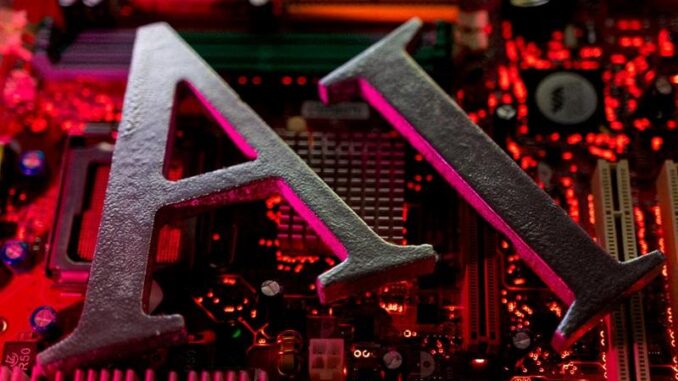
The Philippines will once again hold its midterm elections in May 2025.
Much like the 2022 presidential elections and the 2023 Barangay and Sangguniang Kabataan Elections (BSKE), candidates vying for positions in the 2025 National and Local Elections (NLE) are expected to troop to social media to reach and woo voters.
For award-winning data scientist and technologist Dominic “Doc” Ligot, artificial intelligence (AI) and deepfakes are bound to create more noise in cyberspace during the campaign period for the 2025 NLE.
“I’ve been expecting that this will happen. Since 2018, I’ve seen the possible use of deepfakes for campaigning,” Ligot told GMA News Online in a mix of English and Filipino during a Zoom interview.
“So far, we haven’t seen any serious use of deepfakes concerning the upcoming elections,” said Ligot.
According to the expert, AI can be broadly defined as any process that uses data to do or create an output. It can be categorized into two: generative and discriminative artificial intelligence.
Generative AI (GenAI) models are designed to generate data while discriminative AI models focus on distinguishing between different kinds of data.
Deepfakes, on the other hand, are a form of generative AI, creating “synthetic videos, synthetic audio, synthetic images” based on patterns that they previously learned.
“The earlier deepfake technology was based on a process called Generative Adversarial Network (GANs), where basically the model produces random images of good quality,” Ligot said.
“It is getting more and more difficult to tell it’s fake. Or actually, you won’t know it’s fake anymore,” he added.
Deepfakes, according to the Department of Information and Communications Technology (DICT), are the “mimicry of the voice or image of the person purporting to be someone else.”
It can be generated by splicing photos, videos, audio, or a combination of the formats to create deceiving and false content.
Currently, there are three general approaches to deepfake technology, Ligot said. These are face-swapping, lip-synching, and AI-generated avatars.
“I think in general, what Gen AI can do is to speed up the generation of content. It all depends on the contents you were creating,” he said. “Generally, it is a good thing”.
“We can expect that everything will be driven by AI. From candidates’ speeches to advertisements, there will be elements of AI because it will save time,” Ligot said.
Dangerous
But there is danger.
“It will negatively impact us because there is a risk of proliferating propaganda and fake news,” Ligot explained.
Among the Filipino personalities who have fallen victim to deepfakes were GMA News anchor and senior reporter Ivan Mayrina and GMA host Susan Enriquez, whose fake videos supposedly reporting on the distribution of necklaces from Italy have been posted on social media to scam users.
The video that featured Ivan Mayrina has garnered 1.8 million views since it was uploaded in December 2023. The video that featured Susan Enriquez reached 146,000 views.
Ligot warned that deepfake is “starting” to be used for misinformation and disinformation, unlike previous approaches where it was used to produce satirical content. He cited purported photos of Senator Risa Hontiveros and dismissed Bamban, Tarlac Mayor Alice Guo insinuating the two had a personal relationship. Hontiveros has since rejected the photos as fake.
“We’re expecting an influx of deepfakes for the elections because Gen AI apps are now all hosted online. You can subscribe and create a deepfake on the fly with very minimal investment,” said Ligot.
“With the increase in deepfakes online, we’re impeaching real photos and videos because the audience will assume material is fake. No one will trust any photo and video anymore,” he added.
The Foundation for Media Alternatives Inc. (FMA) earlier warned the technology may impact next year’s polls, saying deepfakes have been used in other countries to manipulate the elections.
AI and the 2025 polls
The Commission on Elections (Comelec) has likewise anticipated the possible use of AI and deepfakes in next year’s polls.
Unlike the recent elections wherein social media platforms were used by troll farms and false information were shared therein, the emerging technology may be used for adverse purposes, Comelec Chairman George Garcia said.
“If deepfakes will be used to enhance candidates’ physical attributes, then there’s nothing wrong with that. However, if it will be used for cyber libel, misrepresentation, and proliferation of disinformation and fake news, then I think we all agree that is wrong,” Garcia said in a phone call.
“Deepfakes, for me, should be absolutely banned. They were fake so why should we allow it to be used in the polls?” he said.
Comelec has come up with ways to combat the misuse of AI and deepfakes in the 2025 NLE.
In June, the poll body proposed to the Comelec en banc to prohibit candidates from using AI technology and deepfakes in their electoral campaigns.
In July, the Comelec announced it would come up with a set of guidelines for the use of AI in the May 2025 elections. The guidelines would be based on the results of discussions in a stakeholders’ forum and consultation dialogue Comelec conducted at the University of the Philippines.
A task force tasked to protect the upcoming elections against AI-driven misinformation and disinformation through the monitoring, and regulating of published content on quad-media such as TV, radio, print, and online was likewise launched last month.
“There will be legal and constitutional issues against it so we were hoping the guidelines would provide clear rules on the use of AI and deepfakes for the campaign,” said Garcia.
“We would also welcome it should it be challenged before the Supreme Court (SC). In that case, we can ask the SC to guide us for a clearer direction on its implementation,” he said.
The guidelines, which will fall under the Fair Elections Act, are expected to be released before the period for the filing of the certificates of candidacy for the 2025 polls starts on October 1, 2024.
Asked how it will be enforced, Garcia said: “We will have to enforce this at all costs. The 1987 Constitution mandates us to ensure the election is fair, honest, credible, and reliable. If we were stopped with the lack of laws, it would feel as if we were not adhering to our obligation.”
“Despite the legal roadblocks, the Comelec will still proceed and implement. If some people would see that we were overstepping our functions, then we can always elevate it to the Supreme Court,” he said.
Violations on the guidelines will be considered as election offenses, which may warrant disqualification for candidates.
“The sanction should be disqualification. It can be considered an election offense because the law states that violating the Comelec rule and guidelines is an election offense, right?” the poll chief added.
There are currently no laws prohibiting the use of deepfakes. But a House bill was filed last year seeking to impose a heftier penalty for the use of deepfake technology in committing crimes, with a penalty one degree higher than those prescribed in the Revised Penal Code or corresponding laws.
Meanwhile, the DICT said the matter on deepfakes are part of the National Cybersecurity Plan.
The policy on deepfakes has yet to be released as consultation is still ongoing.
“Ang hirap sa paggawa ng policy diyan is that on the one hand, you have freedom of expression. On the other hand, of course, you have to regulate kasi it is harming someone,” said DICT Undersecretary Jeffrey Ian Dy.
(One of the problems in creating a policy on deepfakes is on one hand, you have freedom of expression. On the other hand, of course, you have to regulate it because it is harming someone.)
Vigilance
With the expected influx of deepfakes and AI online, how can the voting public exercise vigilance against the emerging threat?
For Ligot, educating the public on deepfakes will help them create “mental resistance” against the false photos, videos, and audios circulating online. He said non-government organizations (NGOs) could first reach out to their sectors to warn their people against deepfakes.
“Why don’t we start a mass education campaign and expose the public to deepfakes? If people are used to seeing the deepfakes, it might at least plant a seed of doubt and make them less susceptible to it,” the tech expert said.
“My thrust is that before even the government does it, cause-oriented groups, NGOs, activists should start briefing their respective sectors… I think that should be part and parcel of election vigilance. Let us reach out and teach them, especially those who are susceptible to deepfakes such as young people and senior citizens,” he said.
Garcia echoed Ligot’s remarks as he called on NGOs and sectoral groups to educate people on social media and AI as well as the importance of fact-checking.
“Not everything we see on our screens is true. Not everything is believable. We need to be critical thinkers… We need to research, inquire, and find out the truth,” said Garcia.
“If we immediately believe something, it could ruin someone’s life, reputation, or dignity. At the same time, we might be misled by false information spreading on social media. In the end, those who abuse social media are trying to exploit our weaknesses, especially our lack of knowledge. We shouldn’t let that happen,” he said.
“We should fight against this because, in my opinion, when Filipinos vote, their vote should be based on what’s in their heart,” he added. —KG/RSJ, GMA Integrated News





Be the first to comment